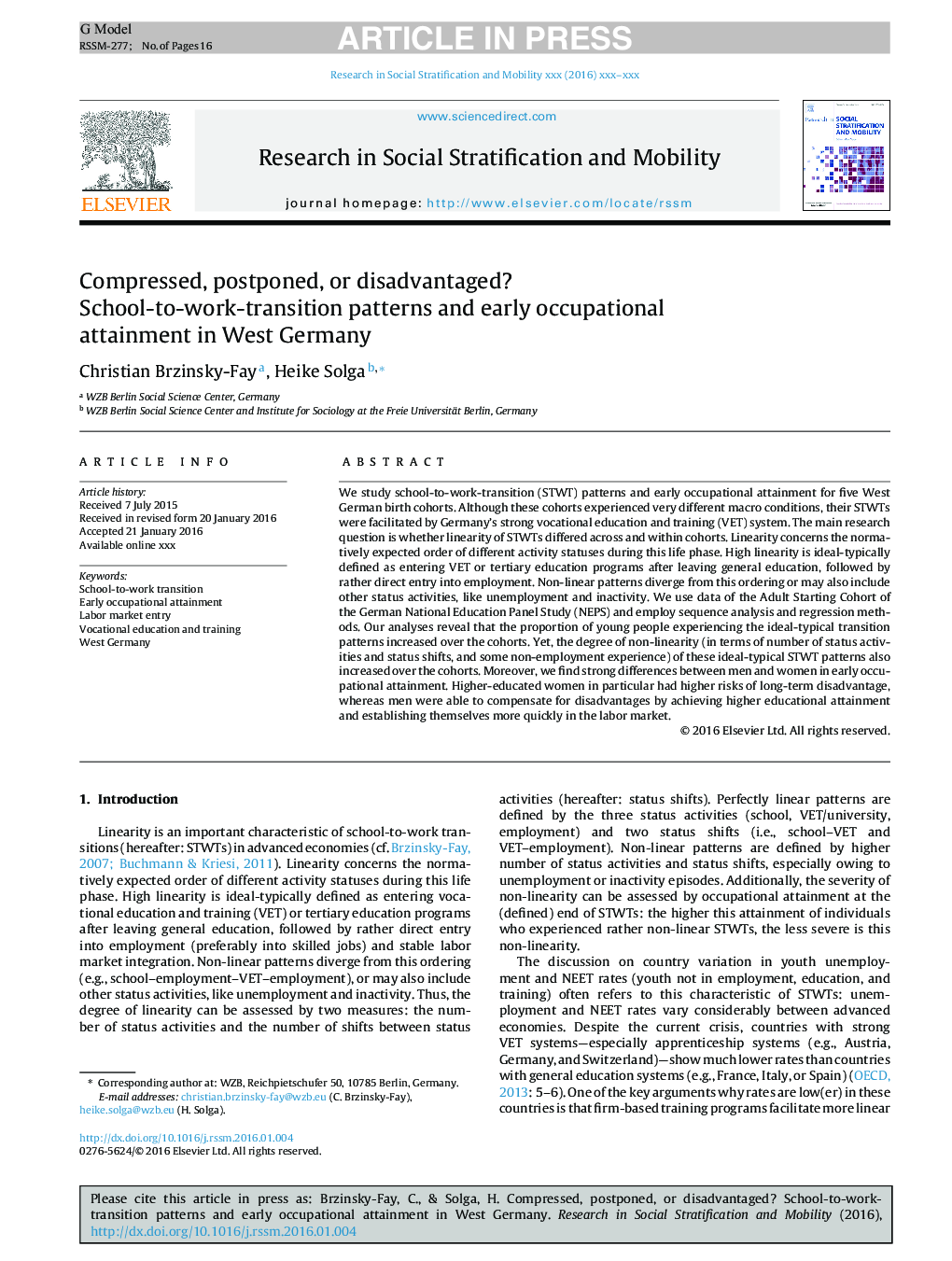| Article ID | Journal | Published Year | Pages | File Type |
|---|---|---|---|---|
| 5106622 | Research in Social Stratification and Mobility | 2016 | 16 Pages |
Abstract
We study school-to-work-transition (STWT) patterns and early occupational attainment for five West German birth cohorts. Although these cohorts experienced very different macro conditions, their STWTs were facilitated by Germany's strong vocational education and training (VET) system. The main research question is whether linearity of STWTs differed across and within cohorts. Linearity concerns the normatively expected order of different activity statuses during this life phase. High linearity is ideal-typically defined as entering VET or tertiary education programs after leaving general education, followed by rather direct entry into employment. Non-linear patterns diverge from this ordering or may also include other status activities, like unemployment and inactivity. We use data of the Adult Starting Cohort of the German National Education Panel Study (NEPS) and employ sequence analysis and regression methods. Our analyses reveal that the proportion of young people experiencing the ideal-typical transition patterns increased over the cohorts. Yet, the degree of non-linearity (in terms of number of status activities and status shifts, and some non-employment experience) of these ideal-typical STWT patterns also increased over the cohorts. Moreover, we find strong differences between men and women in early occupational attainment. Higher-educated women in particular had higher risks of long-term disadvantage, whereas men were able to compensate for disadvantages by achieving higher educational attainment and establishing themselves more quickly in the labor market.
Related Topics
Social Sciences and Humanities
Economics, Econometrics and Finance
Economics, Econometrics and Finance (General)
Authors
Christian Brzinsky-Fay, Heike Solga,
